Arrays allow storing multiple values of the same type in contiguous memory locations. They are declared with the data type, name, and number of elements. Each element can then be accessed via its index number. Arrays must be initialized before use, which can be done by assigning values within curly brackets when declaring the array. Values in arrays can then be accessed and modified using indexing syntax like name[index].
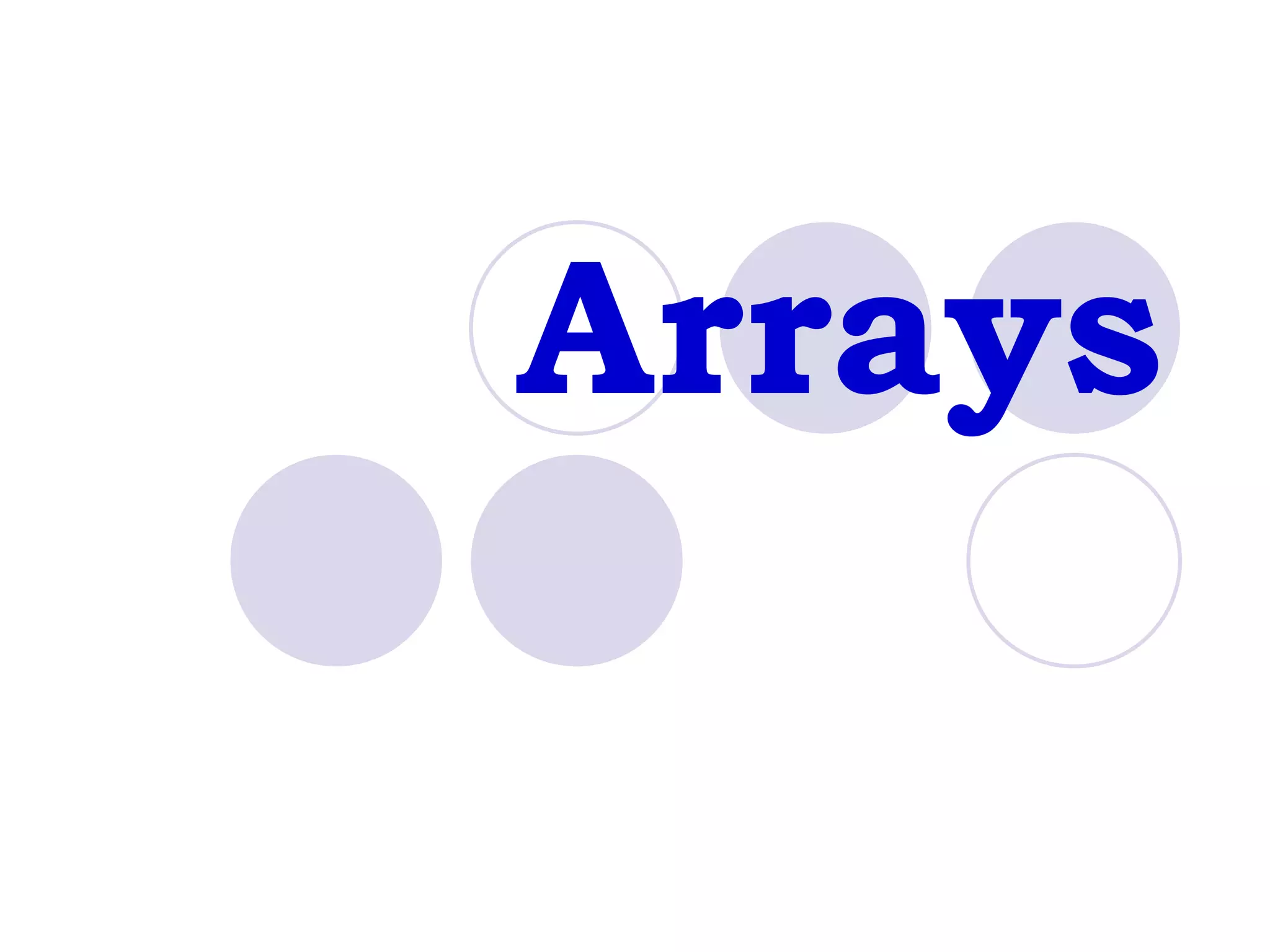
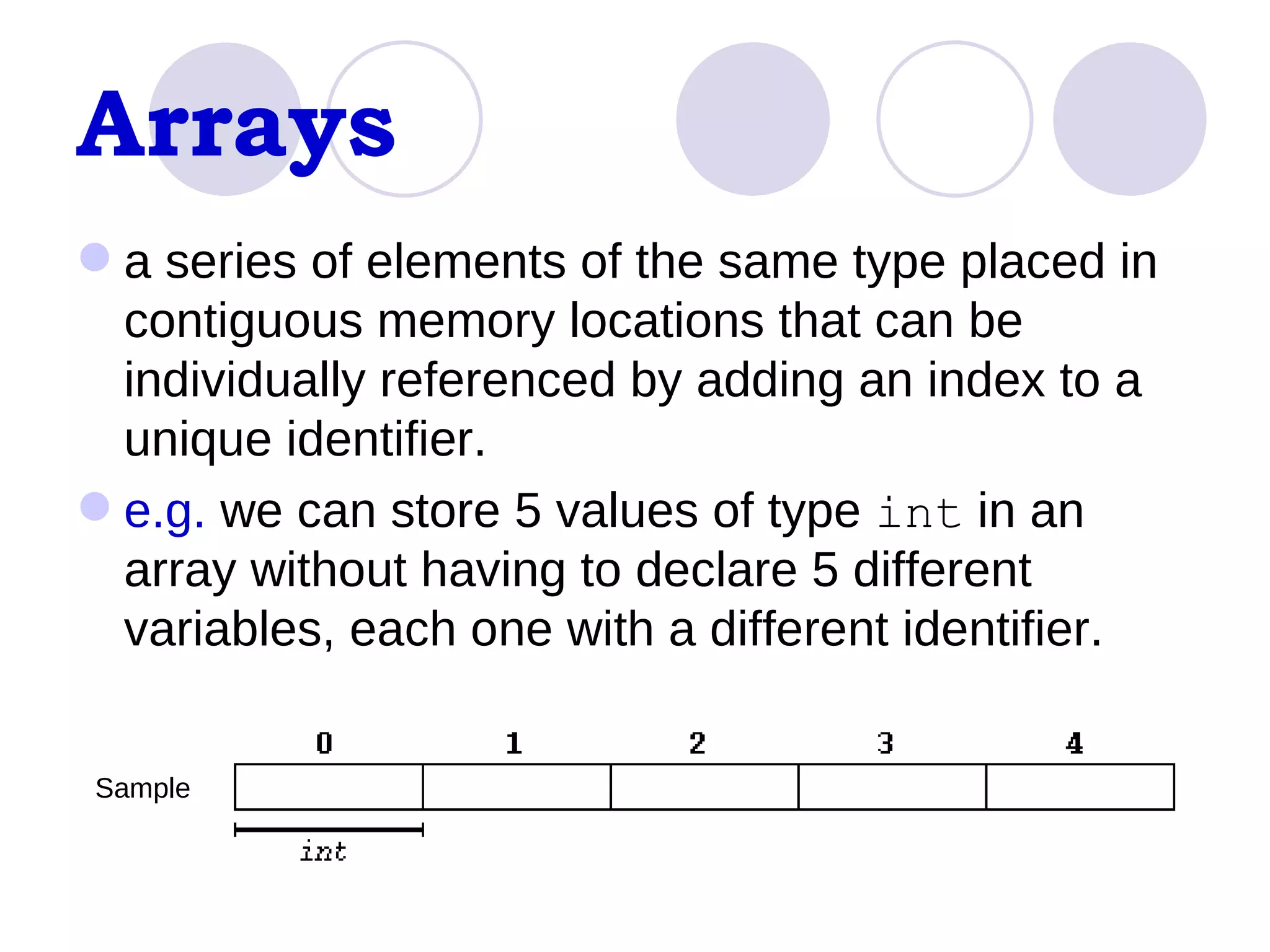
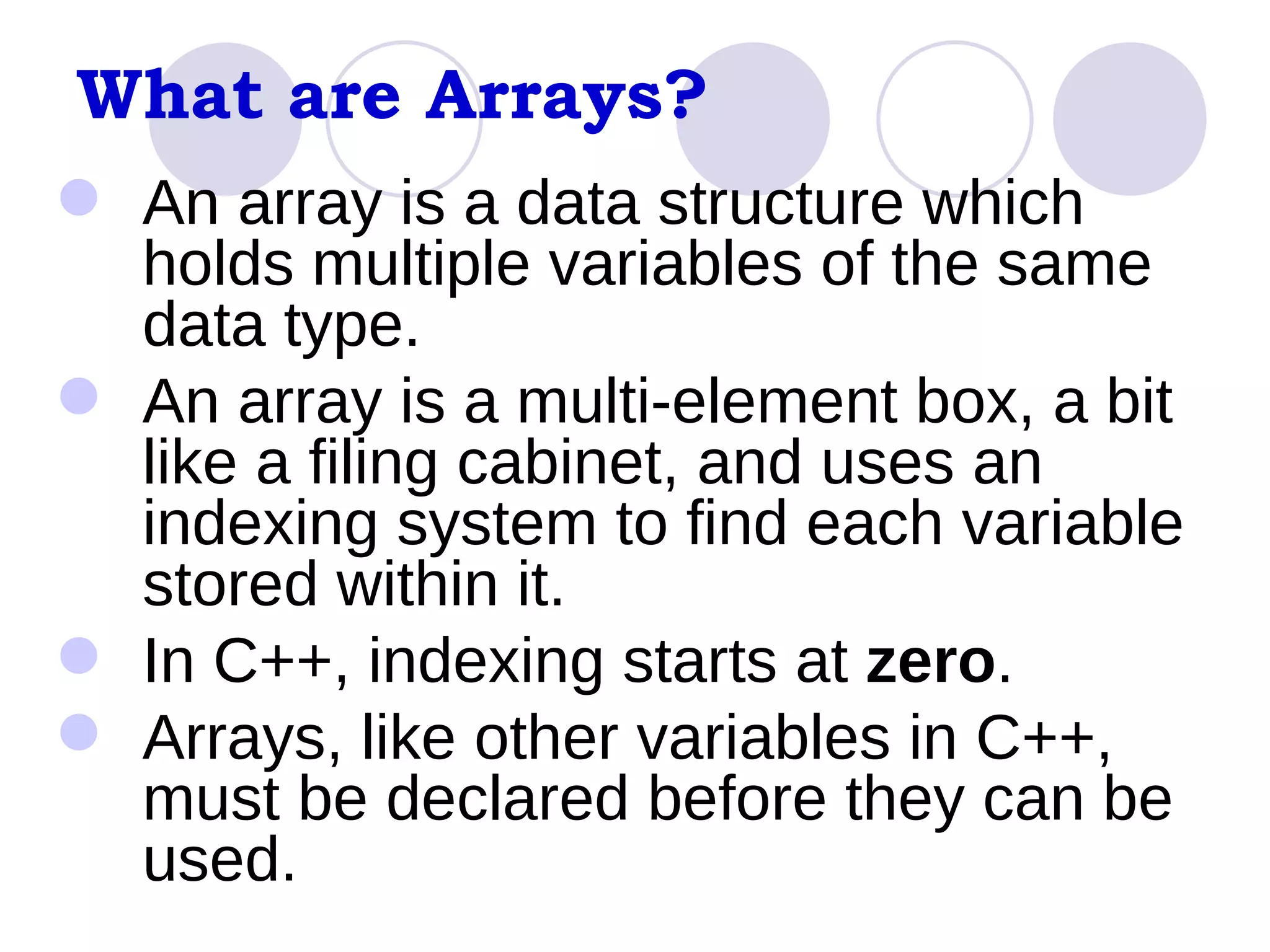
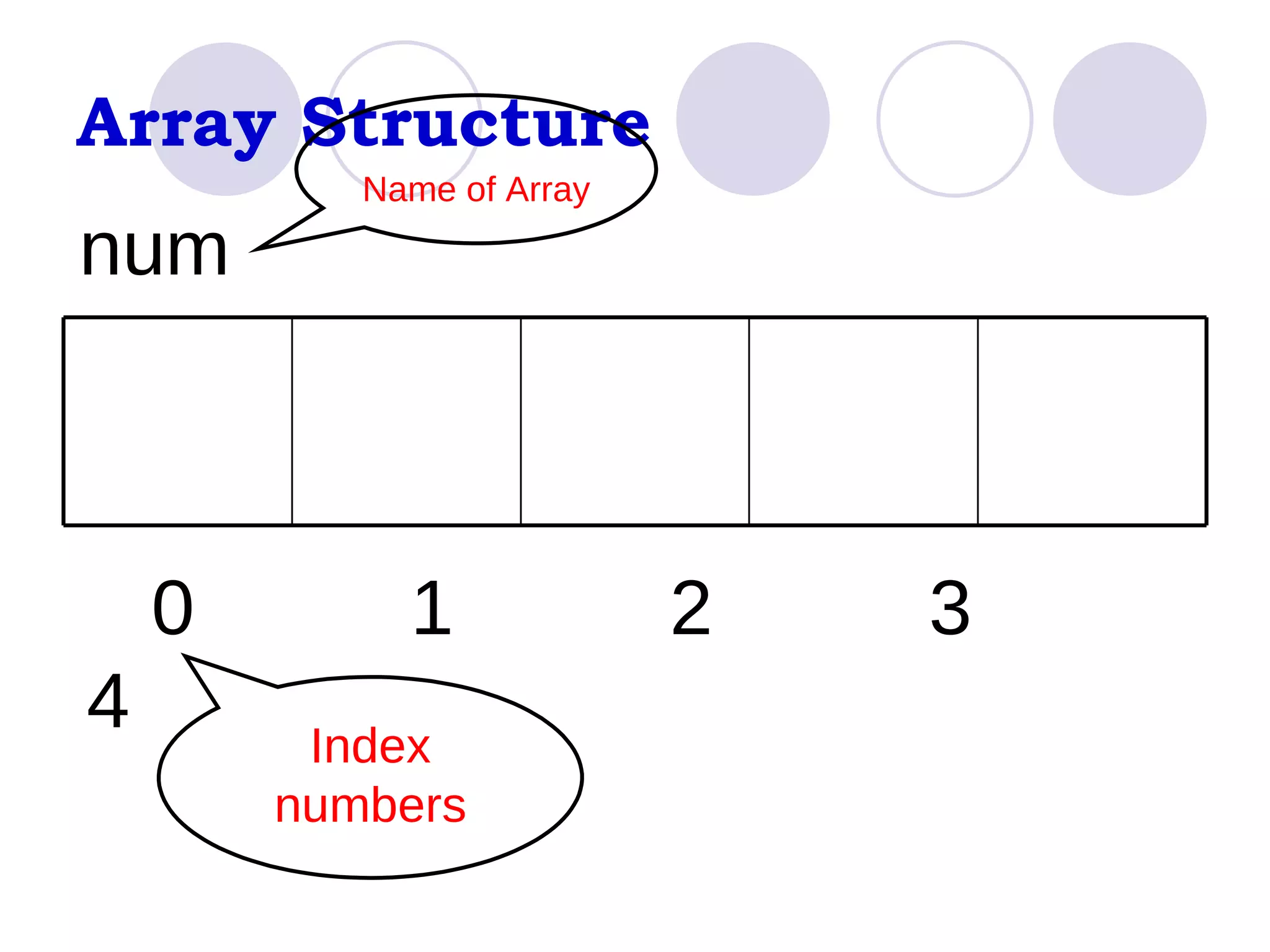
![Declaring an ARRAY General Syntax: type name [elements]; Where: type is a valid type (like int , float ...) name is a valid identifier elements field (which is always enclosed in square brackets [ ]), specifies how many of these elements the array has to contain.](https://image.slidesharecdn.com/2-arrays-100824091701-phpapp01/75/2-arrays-5-2048.jpg)
![e.g. int sample [ 5 ]; The elements field within brackets [ ] which represents the number of elements the array is going to hold, must be a constant value, since arrays are blocks of non-dynamic memory whose size must be determined before execution. In order to create arrays with a variable length, dynamic memory is needed. Sample](https://image.slidesharecdn.com/2-arrays-100824091701-phpapp01/75/2-arrays-6-2048.jpg)
![Declaring Arrays #include <iostream.h> void main() { int numbers[100]; int averages[]= {10,20,30}; numbers[0] = 10; }](https://image.slidesharecdn.com/2-arrays-100824091701-phpapp01/75/2-arrays-7-2048.jpg)
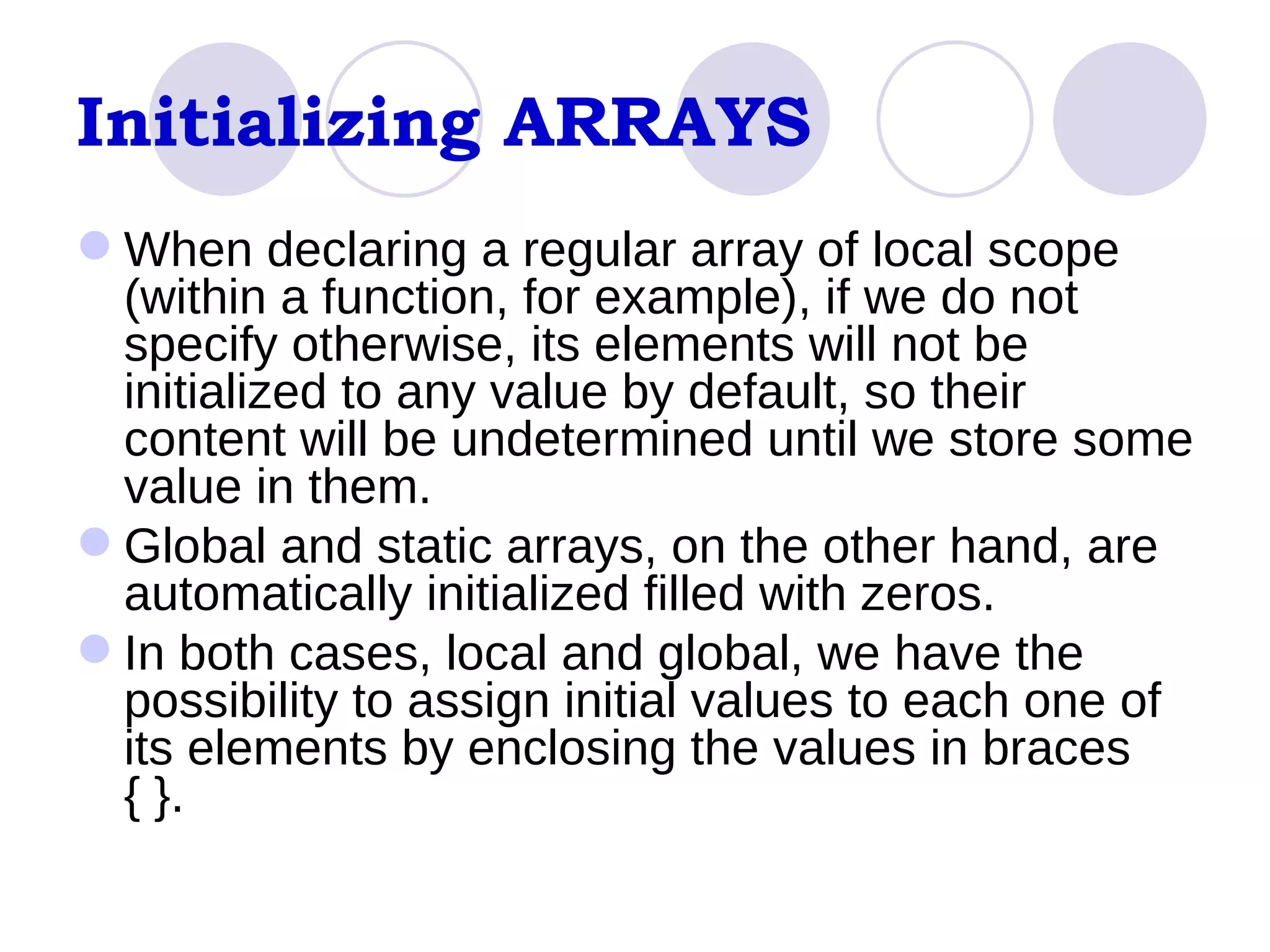
![int sample [5] = { 16, 2, 77, 40, 12071 }; The amount of values between braces { } must not be larger than the number of elements that we declare for the array between square brackets [ ]. When an initialization of values is provided for an array, C++ allows the possibility of leaving the square brackets empty [ ]. int sample [] = { 16, 2, 77, 40, 12071 }; 16 40 77 2 12071 Sample](https://image.slidesharecdn.com/2-arrays-100824091701-phpapp01/75/2-arrays-9-2048.jpg)
![Initializing Arrays #include <iostream.h> main() { int count; int values[100]; for( count = 0; count < 100; count++ ) values[count] = 10; }](https://image.slidesharecdn.com/2-arrays-100824091701-phpapp01/75/2-arrays-10-2048.jpg)
![Accessing the values of an ARRAY In any point of a program in which an array is visible, we can access the value of any of its elements individually as if it was a normal variable, thus being able to both read and modify its value. name[index] Sample[3] Sample[0] Sample[2] Sample[1] Sample[4] Sample](https://image.slidesharecdn.com/2-arrays-100824091701-phpapp01/75/2-arrays-11-2048.jpg)
![e.g., to store the value 75 in the third element of sample: sample[2] = 75 e.g., to pass the value of the third element of sample to a variable called a: a = sample[2];](https://image.slidesharecdn.com/2-arrays-100824091701-phpapp01/75/2-arrays-12-2048.jpg)
![An Array example int num[4]; num[0] = 101; num[1] = 232; num[2] = 231; num[3] = 0; The array num has a length of 4](https://image.slidesharecdn.com/2-arrays-100824091701-phpapp01/75/2-arrays-13-2048.jpg)
![Square brackets [ ] perform two different tasks: to specify the size of arrays when they are declared; to specify indices for concrete array elements. int sample[5]; // declaration of a new Array sample[2] = 75; // access to an element of the Array.](https://image.slidesharecdn.com/2-arrays-100824091701-phpapp01/75/2-arrays-14-2048.jpg)
![Some Valid Operations with Arrays sample[0] = a; sample[a] = 75; b = sample [a+2]; sample[sample[a]] = sample[2] + 5;](https://image.slidesharecdn.com/2-arrays-100824091701-phpapp01/75/2-arrays-15-2048.jpg)
![Sample Implementation: // arrays example #include <iostream.h> int sample [] = {16, 2, 77, 40, 12071}; int n, result=0; int main () { for ( n=0 ; n<5 ; n++ ) {result += sample[n];} cout << result; return 0;}](https://image.slidesharecdn.com/2-arrays-100824091701-phpapp01/75/2-arrays-16-2048.jpg)
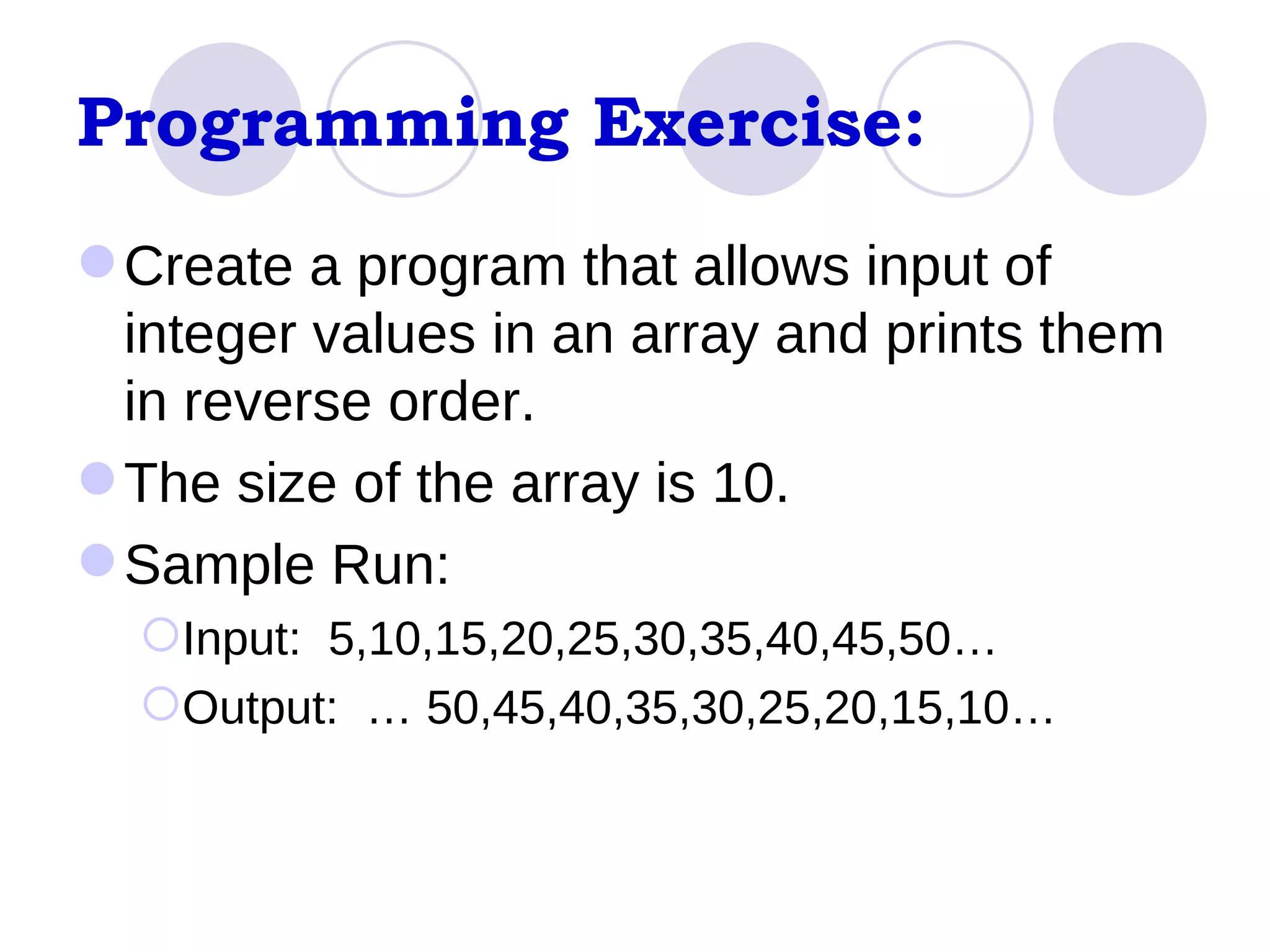
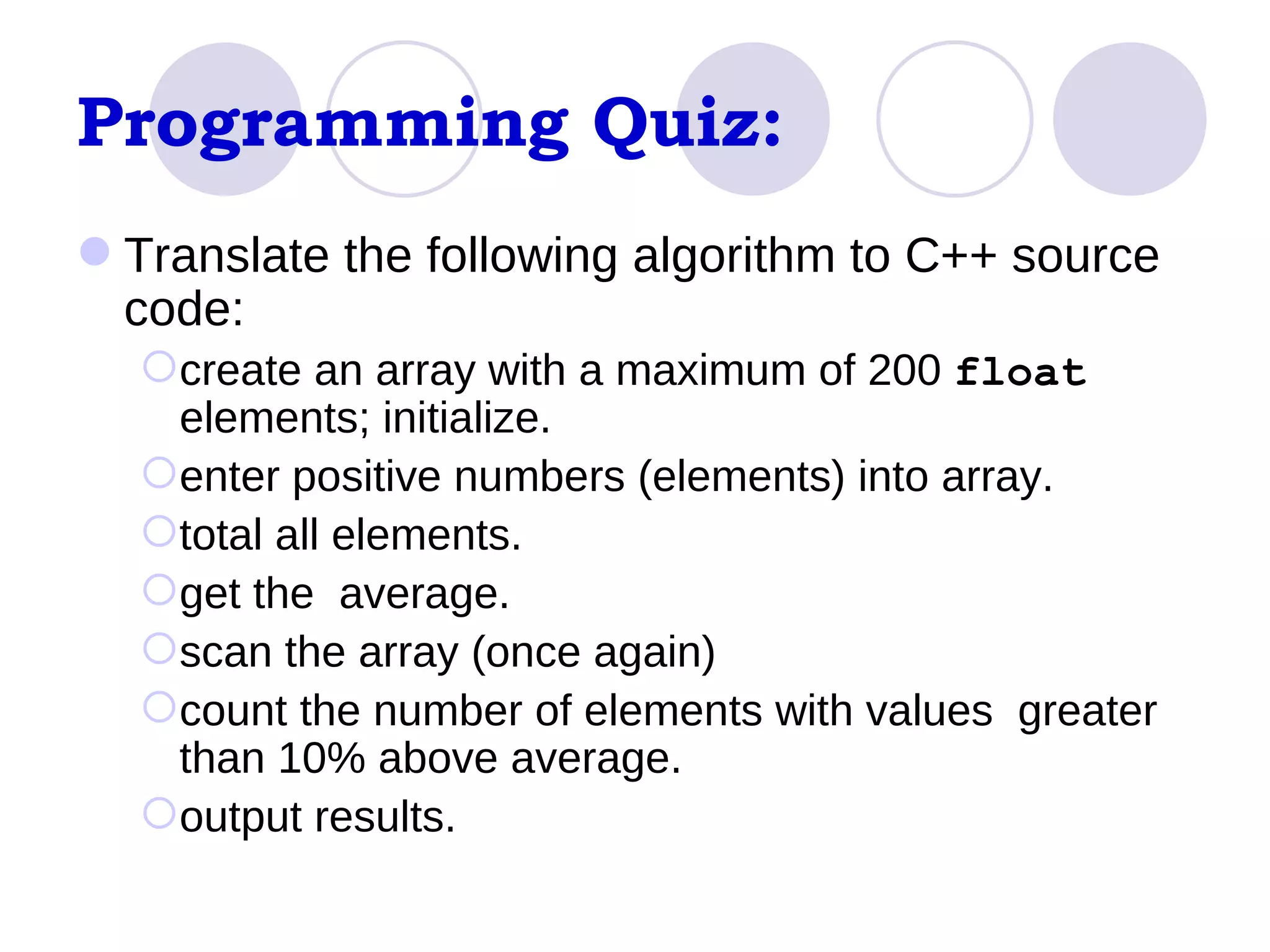
![Character Sequences the C++ Standard Library implements a powerful string class, which is very useful to handle and manipulate strings of characters. However, strings can also be represented as plain arrays of char elements. e.g. char sampchar [20];](https://image.slidesharecdn.com/2-arrays-100824091701-phpapp01/75/2-arrays-19-2048.jpg)
![array of characters can store shorter sequences than its total length a special character is used to signal the end of the valid sequence: the null character , whose literal constant can be written as '\0' (backslash, zero). Hence, to initialize array of characters: char myword[] = { 'H', 'e', 'l', 'l', 'o', '\0' }; sampchar](https://image.slidesharecdn.com/2-arrays-100824091701-phpapp01/75/2-arrays-20-2048.jpg)